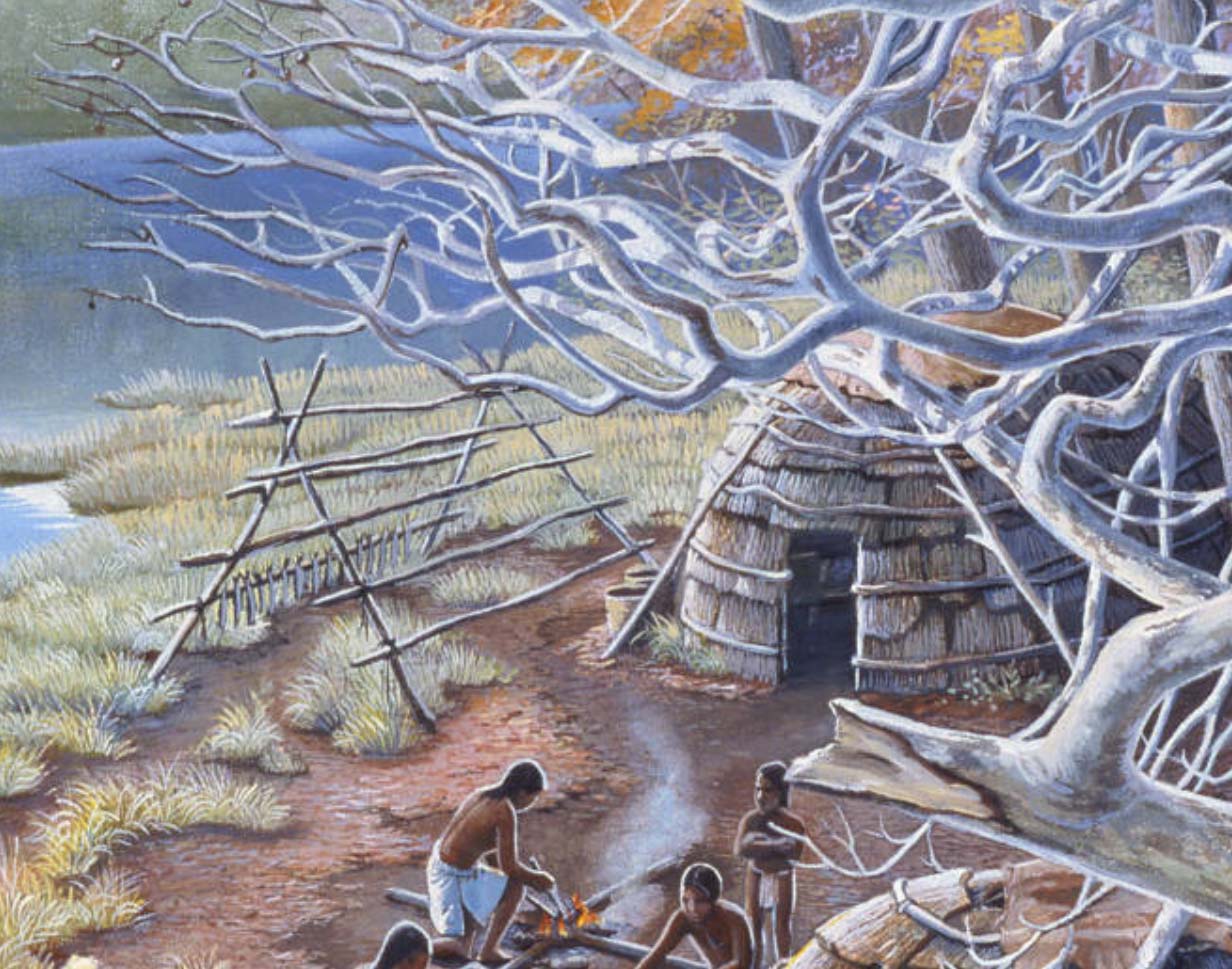About this Place: Once Home to 40 Tribes and the Traditional Home of the Shawnee Peoples
Statement about Land Acknowledgement and Inclusive Public Spaces
The Charles J. Ping Institute's curators for the Humanities in the Park Exhibit acknowledge that this work is presented in a space initially settled and developed during the Adena, Hopewell, and Fort Ancient eras. The Southeastern Ohio region was at one time a convergence zone of some 40 tribes, including the Mingo, Erie, Lenape, Wyandot, and Miami people, as well as others that shared in the rich hunting grounds and relative safety that these lands provided. It became the traditional homelands of the Shawnee peoples as well as the Wahzhazhe (Osage) nations.
In 1795, after at least a decade of war with the United States, leaders from a dozen sovereign nations were forced to sign the Treaty of Greenville, which ceded lands comprising most of eastern, southern, and central Ohio to the U.S. government. A confederacy of tribes, united under the great Shawnee leader Tecumseh, continued to resist U.S. aggression until 1815, when they were eventually forced from Ohio, including lands currently occupied by Athens, Ohio University, and this exhibit. Many Shawnee, meanwhile, remained on reservation land in Ohio until 1831, when they were finally compelled to emigrate to Native American Territories west of the Mississippi River. The final Ohio tribe to be removed was the Wyandot in 1843.
Nevertheless, more than 200 years later, people from a broad array of Indigenous cultures continue to call this land home and have contributed significantly to the local, national, and international study of humanities. This exhibit recognizes the important contributions of some of those people.
We also acknowledge that the violent legacy of conquest and colonialism has often led to cultural misappropriation and twisted understanding of Indigenous peoples and their culture. It is thus essential that our public sites and exhibit spaces both acknowledge and accurately portray that violence while also recovering the history and voices of its victims. We accept that responsibility.

